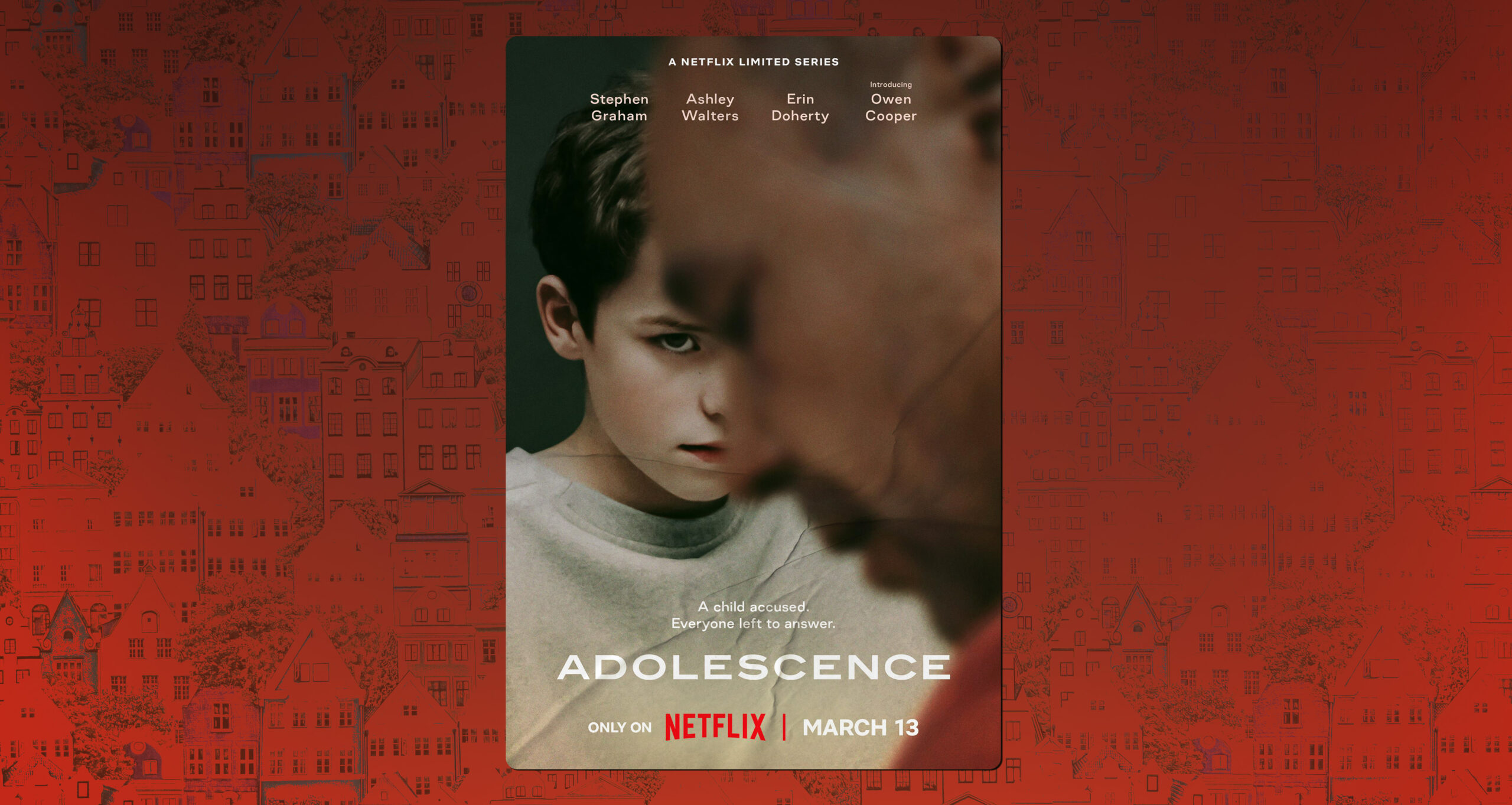Refine reviews: Netflix’s ‘Adolescence’
Published on April 27, 2025

Netflix’s Adolescence is a gripping four-part series that explores the tragic loss of innocence in a hyper-digitalized world. The plot follows 13-year-old Jamie Miller, who is arrested for the brutal murder of his classmate, Katie.
As the story unfolds, it explores themes of social media’s influence, parental disconnect, and the ways children form their worldviews online. Through its raw storytelling, Adolescence forces viewers to confront uncomfortable truths about technology and the radicalization of youth.
Is it worth the watch? To help you decide, here are my three takeaways.
1. The Element of race and Elon Musk’s cultural commentary
One of the most polarizing aspects of Adolescence is its portrayal of knife crime and its intersection with race. The show’s creators, Jack Thorne and Stephen Graham, have emphasized that the series is fictional and not intended to address racial issues.
Yet, it’s difficult to watch without recalling the July 2024 knife attack in Southport, England—a town less than two hours from the show’s setting. The similarities are striking: a teenage boy killed three girls attending a dance class, leaving the community devastated and searching for answers.
Elon Musk highlighted the racial dimension on X, alleging that the show was inspired by real-life crimes committed by black individuals. Like many viewers, he may have been reminded of the Southport incident. Media coverage of that tragedy was swift, but notably delayed in identifying the attacker, who was black. Police silence fueled intense debate about racial bias in media narratives. Eventually, what many suspected was confirmed: the perpetrator was a minority.
The creators of Adolescence rejected Musk’s claims as “absurd,” emphasizing that their focus was on masculinity and societal pressures rather than racial profiling. The intention was to open a conversation toward broader issues like toxic masculinity and emotional repression in young boys; nonetheless, the race element cannot be ignored.
Racial profiling has become a sign of racism and perhaps why Musk was quickly criticized for the comment, but I believe that in this context, it is an opportunity to note that teenagers in minority communities often face far greater challenges than their white counterparts since they have even less support throughout their maturing process.
2. Parental disconnect in a digital world
Another powerful theme in Adolescence is the growing disconnect between parents and their children due to digital technology. Jamie’s parents are portrayed as largely unaware of his online life, failing to recognize how deeply social media influences his emotions and decisions.
The story comes from real-life data: surveys reveal that 56% of parents are unaware of how much time their children spend online, and a staggering 70% have no knowledge of cyberbullying or illegal activities their kids may be involved in.
The show challenges the common assumption that digital or virtual experiences are somehow less real than physical ones. For Jamie, interactions on platforms like Instagram are intensely personal and emotionally charged – so much so that they contribute to his violent outburst against Katie. After she rejects his advances, the emojis she sends carry meanings he perceives as mocking or cruel. While this initially seems absurd to the adults, the investigator’s son helps his father understand the significance, illustrating how online behavior can have real emotional consequences – especially for vulnerable adolescents.
Parental involvement is essential in bridging this digital divide. Parents must develop digital literacy so they can better understand their children’s online worlds. Open, trusting conversations about Internet safety can help protect against risks like cyberbullying and exposure to harmful content.
Most importantly, children need to see their parents as more approachable than the Internet itself. The family must remain the primary safe space – not the web. Adolescence is a wake-up call, urging parents to engage more actively in their children’s digital lives, because what happens online is just as real – and impactful – as what happens offline. Perhaps just as we wouldn’t allow a kid to roam the streets of a foreign city alone, we should not let them have access to every possible corner of the digital world through a phone. This is also a reminder that not all phones allow this unlimited roaming. Flip phones anybody?
3. The Internet as a shaper of worldviews
Perhaps the most unsettling takeaway from Adolescence is how young people are shaping their worldviews through online communities – many of which promote radical or violent ideologies. Jamie’s anger at being labeled an “incel” by Katie leads him into toxic subcultures that offer simplistic, harmful narratives about identity, relationships, and masculinity.
More than ever, children are turning to the Internet, not parents or mentors, for answers to life’s deepest questions. With one-third of global Internet users under 18, many are exposed to cyberhate, disinformation, and violent content, often without seeking it out. For impressionable teens, such exposure can distort values and fuel aggression. In Jamie’s case, these online influences magnify his sense of rejection, ultimately pushing him toward violence.
This reality highlights the urgent need for digital literacy – not just for youth, but also for parents and educators. Teaching critical thinking and encouraging open dialogue can help young people navigate online spaces wisely, but we must also recognize that their web exploration should be limited just as the street exploration is. For example, a thirteen year old would not be allied at a strip club but can easily find similar inappropriate experiences online.
Meanwhile, tech platforms must take greater responsibility for enforcing age restrictions. While websites like Pornhub have age restrictions, these are very easy to bypass since asking for proof of age can infringe on a child’s personal information. This leads to many of these age restrictions becoming inefficient. But perhaps, reducing anonymity and safely allowing more personal information can be a step towards more accountability and safety online. Just as in the real world we carry a name and a face, we should do so equally online. If society limits youth access to harmful substances or places in the real world, why tolerate unfiltered exposure to worse dangers online?
Conclusion
Netflix’s Adolescence is more than just a crime drama – it’s a mirror reflecting some of society’s most pressing issues and an obvious reflection of exactly how we are failing our adolescents. From debates about crime to the dangers of parental disconnect and online radicalization, the show forces viewers to confront uncomfortable truths about modern adolescence.
Its message is clear: we cannot afford to ignore the profound impact technology has on shaping young minds. Whether through better parental involvement or systemic changes in how we regulate digital spaces, addressing these challenges is essential for safeguarding future generations.




It’s truly dumbfounding that anyone who calls themself a Catholic Christian would be willing to promote anything about Netflix based on their unholy and openly hostile actions towards the Lord our God and His goodness. Below is a short explanation of those godless things since the author and producer of this article seem to have forgotten that (or perhaps for some reason don’t care enough about it to stop doing business with Netflix and/or promoting them). Please get serious with the Lord or go elsewhere til you do!
“Netflix provides a benefits package for employees that covers travel/lodging costs for an abortion and transgender medical procedures for covered employees and dependents, including children” – https://1792exchange.com/pdf/?c_id=1200